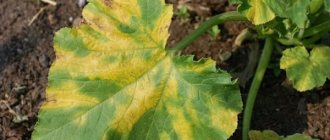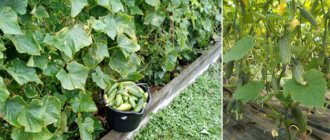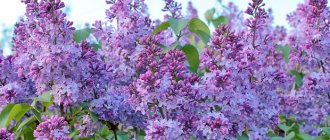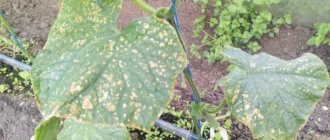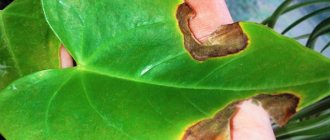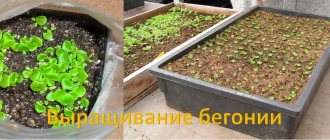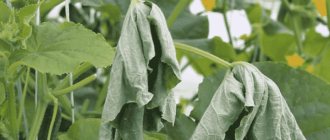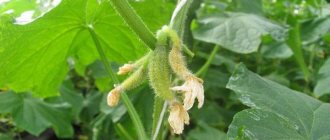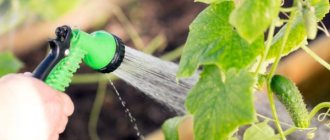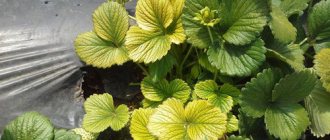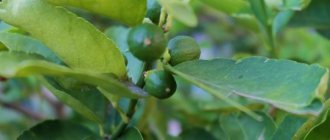Cucumbers are considered to be tropical plants that require a favorable climate to grow. The ideal climate is considered to be high humidity and warm air. Therefore, many people prefer to plant them in greenhouses, since they are the easiest to create suitable climatic conditions. If the conditions for maintaining the climate are met, and care for them is of high quality, then you can count on a good harvest. Both adults and children love cucumber fruits.
Cucumbers are used to prepare various dishes (the addition to various salads is especially popular), vegetables are added to cosmetics, and juice is squeezed out, which is beneficial for health. Cucumbers are especially useful when added to various cosmetic preparations, since they contain a huge amount of useful substances, as well as a substance that can significantly rejuvenate the skin of any age and make it more toned and elastic. People prefer to grow these plants in their own summer cottages during the warm season. For example, in the summer. Cucumbers are usually planted in greenhouses.
But sometimes gardeners observe the appearance of white spots on cucumbers. Then they are overcome by a feeling of confusion, especially if they encounter this problem for the first time, and they wonder: what are the reasons for their appearance and what methods exist to combat them? Let's try to figure it out and find the answers together in this article!
Causes of cucumber diseases
Cucumbers are tender and tasty warm-season annuals that belong to the Cucurbitaceae plant family, making them related to watermelon, squash and melon. All of these crops have some susceptibility to disease or pests, which can cause the leaves to become covered with white spots.
The main cause of diseases and the appearance of white spots is unfavorable climate. This includes drought in summer, sudden temperature changes, and cold at night. Then the plant becomes weakened and more vulnerable to various diseases. In order to avoid this, first of all, it is necessary to carry out high-quality care of the plants. Also, the leaves should be inspected daily to detect pests or the onset of disease in time. If the disease has reached your cucumbers, you should not hesitate, but quickly take action.
The most well-known diseases in which white spots can be considered a clear sign are diseases called powdery mildew, white mosaic and ascochyta. And also a very evil and harmful insect for most of the vegetation in summer cottages - the spider mite, which also leaves these nasty white spots on the leaves.
Below is a table with these four common diseases and their brief descriptions.
| Disease | a brief description of |
| Powdery mildew | The disease occurs due to increased humidity in the soil or air, as well as at temperatures below normal. |
| White mosaic | The most vulnerable plants are those that were grown in greenhouse conditions. Slightly noticeable white spots begin to appear on the leaves, which in appearance may resemble a star with sharp tips. |
| Ascochythiosis | Typically, white spots on the leaves appear due to the fact that the plant has already been infected with ascochyta blight. This type of plant disease can manifest itself not only as white spots, but it is also worth noting that the leaves begin to crack, and brownish spots also appear on the leaves of cucumbers. |
| Spider mite | It is virtually impossible to notice a spider mite right away, since its body reaches an incredibly small size. It seems as if it is a microscopic dot with a clear black color and outline. Typically, mites prefer to hide on the underside of a leaf and weave their web. |
Fortunately, many of these diseases can be cured. Read on to learn how to keep and grow your cucumbers healthy and delicious. Early detection of plant health problems or insect detection can help keep cucumber leaves healthy and green.
What to do if you find white spots
You need to take protective measures immediately after identifying white spots on the leaves of seedlings and adult bushes. You can try to correct the situation using the following measures:
- carefully inspect the plantings for other symptoms;
- try to regulate the microclimate;
- affected leaves are removed;
- If infection is severe, the crop is dug up and burned.
After identifying the pathogen, it is necessary to begin eliminating it. You can fight it with the help of chemicals and folk remedies.
Description of diseases and treatment methods
We will provide a more detailed description of common diseases that cause white spots, and also consider effective methods of prevention and treatment. Let's talk about spider mites, powdery mildew, white mosaic and ascochyta blight.
Powdery mildew
Powdery mildew is one of the most painful plant diseases for gardeners. The disease occurs due to increased humidity in the soil or air, as well as at temperatures below normal. Refers to a fungal disease. It is important to note that distribution occurs almost instantly. Within a few hours, the fungus covers the entire plantation.
Small white spots may appear on the leaves from the very beginning, growing rapidly. Mushroom spores create the impression that someone specially powdered the plant leaves with flour. After a certain period of time, the leaves begin to lose moisture content and gradually dry out until they fall off completely.
There is such a disease as downy mildew, which is not much different from ordinary powdery mildew. A cucumber plant has downy mildew when its leaves show signs of subtle yellow spots. This fungal disease can be treated and prevented in a variety of ways.
If your plant is already infected with this disease, start treating it to prevent further spread of the infection. Use proven traditional methods to avoid the occurrence or development of infection, and use fungicides to stop the development of the disease.
Methods of treatment and prevention:
Unfortunately, it is possible to stop the further development of the disease and completely cure the plant only in the early stages. To do this, plants should be sprayed with Bordeaux mixture, sulfur solution or other fungicides.
To prevent the appearance of white spots, experts recommend spraying plants with folk remedies at least once every seven to ten calendar days; you can see recipes for four of them here:
- Yogurt (1.5 l) must be diluted with water (4 l), and then carefully strain.
- In a more or less voluminous bucket you need to dissolve 50 g of baking soda and 50 g of laundry soap. Before starting, the soap must be grated on a medium grater.
- You can also spray with mullein. To do this, you need to have one kilogram of animal manure and dissolve it in one bucket completely filled with water. The solution should be allowed to brew for twenty-four hours. In addition, this solution can also be called foliar feeding.
- Sometimes plants are dusted with ash, which can also reduce the risk of developing the disease.
It is especially recommended to use folk remedies in situations where cucumbers have already produced a large number of fruits. The fruits are able to absorb all substances very quickly, so it is impossible to use chemicals to control pests or diseases if the cucumbers will later be used for food purposes. This can lead to irreversible consequences.
White mosaic
White mosaic for the most part refers specifically to virally transmitted diseases. Often those plants that were grown in greenhouse conditions are the most vulnerable. Slightly noticeable white spots begin to appear on the leaves, which in appearance may resemble a star with sharp tips. Then whitening or yellowing of the whole leaf occurs. The green places remain in places where there are sparse greenish veins. Sometimes the fruits begin to become covered not with spots, but with whitish stripes.
Methods of treatment and prevention:
Very sad news for gardeners: this disease cannot be cured. No matter how much you try to cure the plant, all attempts will be in vain. All that remains is to burn all already affected plants so that the virus is not transmitted further to neighboring ones. After getting rid of the affected plants, the soil and all garden tools should be treated with a strong solution of potassium permanganate, which is recognized as a disinfectant.
Further, the same work is carried out before planting again. The disease is very tricky and can be transmitted through the seeds of a plant that was diseased. Therefore, it is strictly not recommended to collect seeds from infected fruits. Before planting, you need to soak all the seeds in a solution of potassium permanganate for several hours, even if you are sure that the plant was not affected and the seeds were removed. Prevention will never be superfluous.
Spider mite
It is virtually impossible to notice a spider mite right away, since its body is incredibly small. It seems as if it is a microscopic dot with a clear black color and outline. Typically, mites prefer to hide on the underside of a leaf and weave their web. Typically, gardeners notice it only when light spots appear on the upper side of the cucumber leaves and threads from the web that the mite weaves can be detected. That's why they called him.
The leaves begin to dry and then fall off. Typically, spider mites attack plants during hot periods, when there is a lack of moisture in the air.
Methods of treatment and prevention:
If the plants have been attacked by spider mites, then all leaves that were damaged should be removed from the plants and completely disposed of by burning. The main method of control can be considered spraying with insecticides.
It is also worth following preventive measures, which are not entirely difficult, but will help avoid disastrous consequences, reducing the risk of developing white spots on the leaves, as well as minimizing the likelihood of attack by harmful insects:
- Cucumbers can be grown in one place only after three or four years have passed.
- It is necessary to water only with warm or slightly heated water.
- It is imperative to weed the weeds near the plant in the soil, as well as mulch the beds.
- It is worth regularly cleaning up debris from plants that will accumulate near them.
- In the autumn season, all greenhouse structures and equipment used in gardening activities should be disinfected.
- It is also worth disinfecting the land. To do this, it is worth spilling the top layer of soil with hot boiled water.
When the time comes for planting, it is worth observing the interval between plants so that good circulation of air masses is possible.
Ascochyta blight
Typically, white spots on the leaves appear due to the fact that the plant has already been infected with ascochyta blight. This type of plant disease can manifest itself not only as white spots, but it is also worth noting that the leaves begin to crack, and brownish spots also appear on them. In this case, the fruits look cooked. It’s as if they have gone through the stage when they are doused with boiling water or boiled in a huge pot of water over a fire. After a certain period of time, the cucumber begins to turn black and dry out completely.
Ascochythiosis is an infection that weak vegetables are very susceptible to. An excellent condition for the disease to develop further is increased air humidity.
Methods of treatment and prevention:
Typically, infectious agents live in the soil for a long time. They can also live in plant seeds and waste. When you observe the first signs of ascochythiasis, you should immediately begin to act. The most effective way is to spray cucumbers with Bordeaux mixture, which has a concentration of one percent. If the plant has already been very badly affected, then it is necessary to burn the cucumbers. They must be destroyed with leaves, fruits, and also roots. That is, you will have to burn some soil in the area where the cucumbers grew so that the disease is not transmitted in the future.
Prevention measures
Cucumber diseases are easier to prevent than to deal with their consequences. Prevention begins with proper preparation of the soil and greenhouse . To do this, in the fall, all plants are removed by the roots and burned. The soil is dug up and the holes are watered with a solution of potassium permanganate. The greenhouse is ventilated for 2-3 days.
It is recommended to treat the seeds before sowing . To do this, they are soaked in a solution of copper sulfate or potassium permanganate. Young shoots should be protected from temperature changes and watered properly. Weeding should be done regularly, as many pests spread through weeds.
Crop rotation is an important method of preventing cucumber diseases. The land on which cucumbers grew last season is not suitable for replanting, so this area should be used for cucumbers after 3-4 years.
To prevent viral diseases, it is recommended to water the plant with a solution of copper sulfate mixed with ash. The presence of ash in the soil will protect the plant from many other pathogens.
Is plant deformation a sign of disease?
Many people believe the misconception that misshapen cucumbers are susceptible to some kind of disease and must be destroyed. But the time has come to dispel this myth. If a cucumber has a funny or even funny shape, this does not mean that it has been infected. There are possible reasons for the appearance of misshapen cucumbers.
One possible reason is poor bee pollination of the plant. If you don't have many insects in your garden, this can cause your cucumbers to become misshapen.
All plants need bees to pollinate them. The pollination process should never be interrupted. Other causes of funny vegetables include high temperature, lack of water and too much fertilizer.
Air temperature
Not all greenhouse varieties of cucumbers can withstand sudden changes in temperature during the day. They usually react to sub-zero temperatures by yellowing their leaves and poor fruit development. If cucumbers are fed with potassium or ash, they will be able to withstand minor temperature changes.
The ash solution is prepared as follows: three tablespoons of ash are dissolved in one liter of water and the jar is left to steep in a dark place for two days. But you can replace the ash with onion infusion, which cooks faster. Pour two tablespoons of onion peel into a ten-liter bucket of water, bring the water to a boil, then set aside to infuse until warm. Then you can water cucumber bushes with it to prevent fungal diseases.
